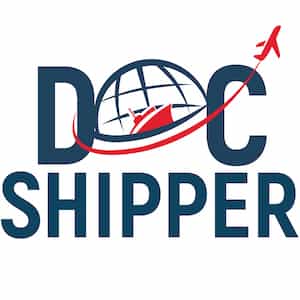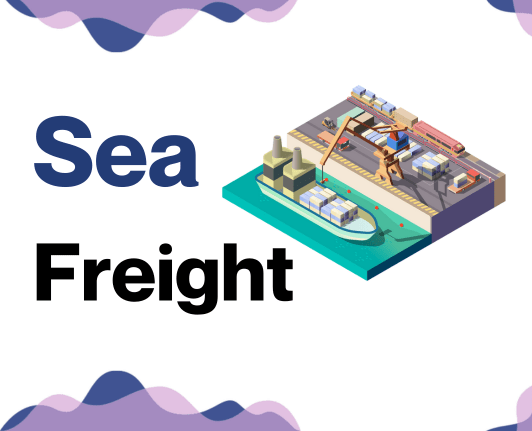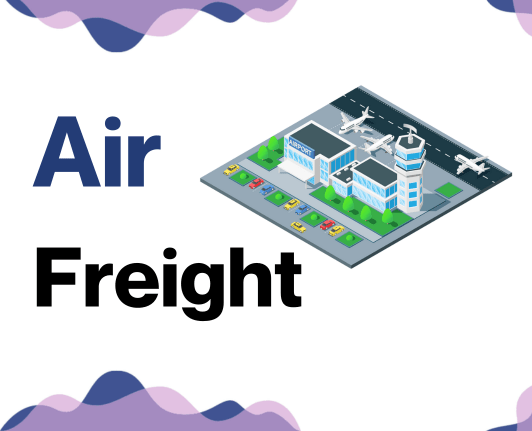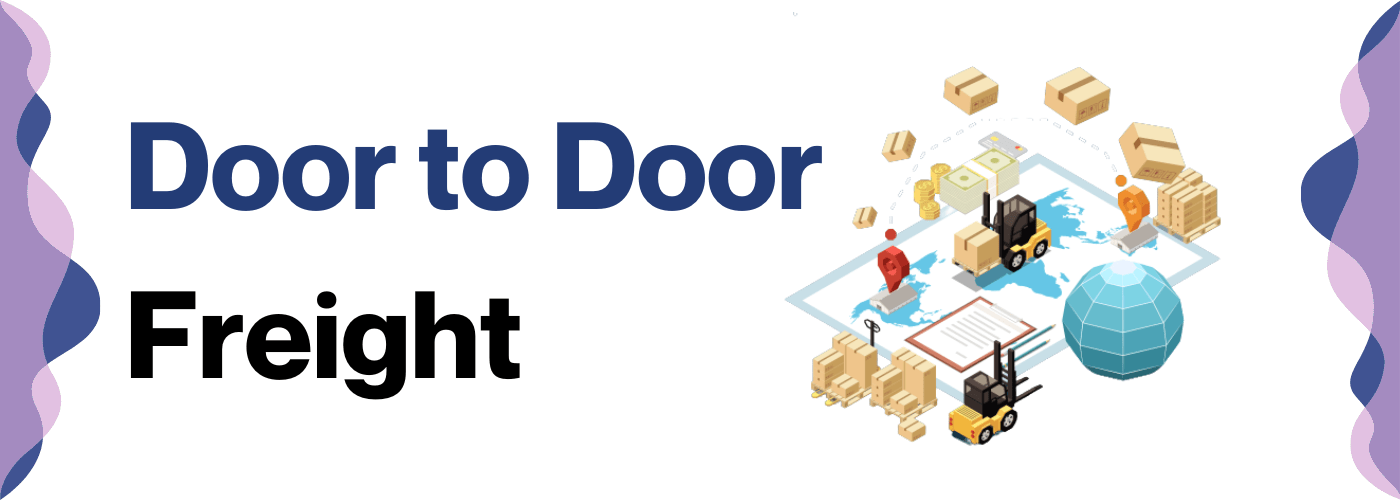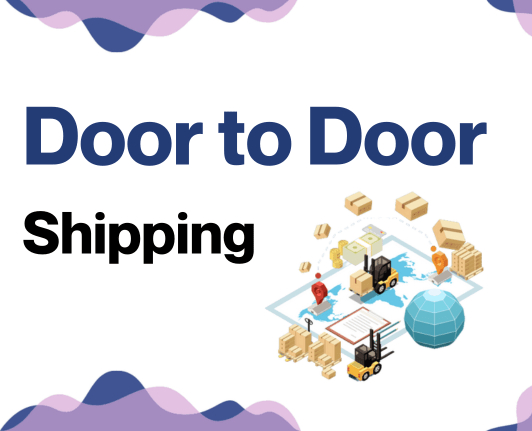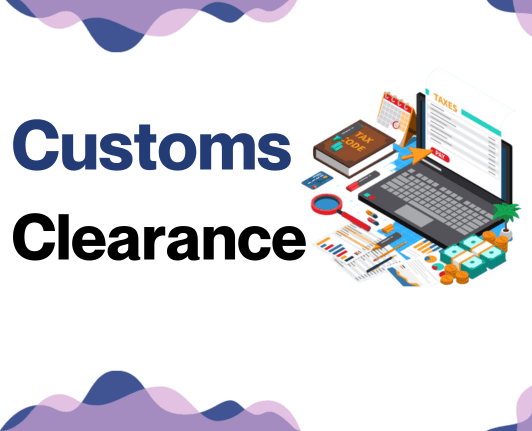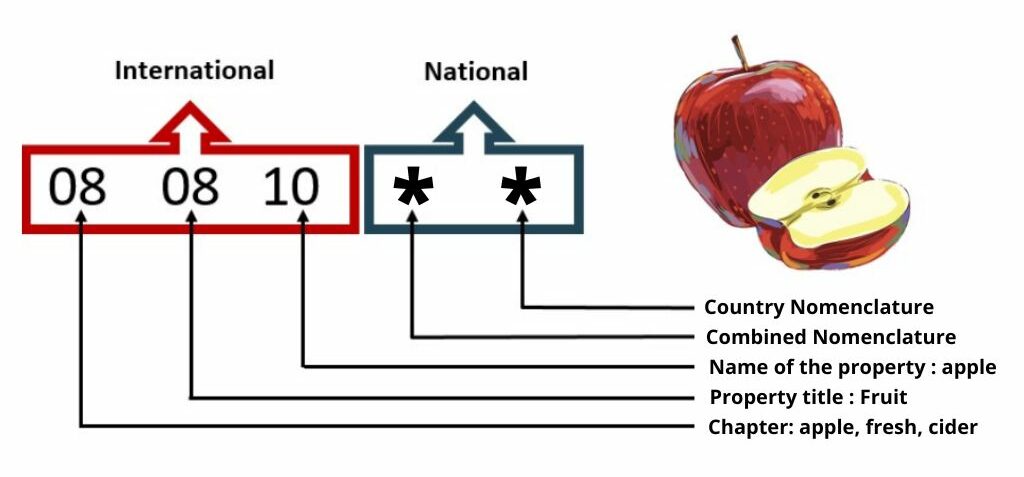If you thought juggling durians was tough, try sorting out the ins and outs of freight transport between Malaysia and France! The maze of transit times, convoluted rate structures, and complex customs regulations can often leave businesses feeling baffled and overwhelmed. This comprehensive guide is here to illumine the path to efficient and advantageous shipping; outlining the various freight options available, explaining the mysterious arts of customs clearance, demystifying duties, taxes, and offering a wealth of tailored advice for businesses looking to expand their horizons. If the process still feels overwhelming, let DocShipper handle it for you! As an international freight forwarder, we masterfully oversee every intricate detail of your shipping process, ensuring we transform challenges into triumphs, delivering not just your shipments but success for your business.
Table of Contents
Which are the different modes of transportation between Malaysia and France?
Choosing the best way to ship goods from tropical Malaysia to cosmopolitan France isn't a one-size-fits-all answer. Picture the vast space and many countries between them! Now, imagine trying to jog that entire distance, exhausting and impractical, right? That's what it's like for land and rail freight. So, we're left with two faster options: flying like Superman or sailing like Columbus. Be it swift air freight for urgency or economical sea freight for bulk shipments, choosing the best fit matters, tailoring the journey to your goods and deadlines while keeping costs down. So, let's dive in!
How can DocShipper help?
Looking to ship goods from Malaysia to France? Trust DocShipper with the process. We handle everything from logistics planning to customs clearance. Uncertainty or questions? Reach out to our consultants - they're just one call away. Interested? Get a free, no-obligation estimate within 24 hours. Connect with us today!
DocShipper Tip: Sea freight might be the best solution for you if:
- You're dealing with hefty quantities or oversized goods. Sea transport is your go-to for maximizing space without stretching your budget.
- Time sensitivity isn't a concern for your shipment. Ocean freight is known for its leisurely pace, especially when compared to the speed of air or rail.
- Your supply chain connects key international harbors. This positions you to take full advantage of a wide-reaching network of ocean trade routes.
Sea freight between Malaysia and France
Ocean shipping is the lifeline of the bustling trade between Malaysia and France. This route, predominantly handled by cargo vessels, connects key Malay industrial hubs like Port Klang and Penang Port to France's Le Havre and Marseille ports. Serving as a cost-effective solution, it carries anything from electronic components to furniture, clothing, and food ingredients. It's ideal for high-volume goods, yet it's somewhat time-consuming - almost like taking a scenic boat trip rather than a sprint.
However, don't let the calm sea fool you - many businesses face a whirlpool of challenges in shipping between these two nations. Fill out a form incorrectly, and you're looking at delays. Ignore a customs regulation, and your shipment could be seized. It's almost akin to jumping hurdles in a race, but armed with our best practices and specific guidelines, tackling these problems will feel more like a smooth sail. Stay tuned as we share the expertise you need for a streamlined shipping experience between Malaysia and France.
Main shipping ports in Malaysia
Port Klang
Location and Volume: Situated in the district of Klang in Selangor, Port Klang is the busiest port in Malaysia, handling approximately 13.2 million TEU annually.
Key Trading Partners and Strategic Importance: The port's key trading partners are China, Singapore, Indonesia, USA, and India. Being strategically located in the busiest shipping lane, the Straits of Malacca, it serves as a major gateway into Malaysia.
Context for Businesses: For businesses looking to gain a foothold in the ASEAN markets, Port Klang could be vital due to its excellent connectivity to major cities in Asia through a vast network of direct, feeder, and transshipment services.
Port of Tanjung Pelepas
Location and Volume: Located at the eastern mouth of Pulai River in south-western Johor, the Port of Tanjung Pelepas Malaysia’s second-busiest port, handling over 9 million TEU annually.
Key Trading Partners and Strategic Importance: Renowned for its trade with China, Singapore, and Europe, the port is strategically important as the closest port to the Singapore Straits and an alternative to the crowded Singaporean ports.
Context for Businesses: Businesses keen on reducing shipping times may benefit from the Port of Tanjung Pelepas due to its strategic location and its excellent reputation for efficiency and productivity.
Port of Penang
Location and Volume: Nestled in the Penang Strait on Penang Island, the Port of Penang accommodates over 1.5 million TEU annually.
Key Trading Partners and Strategic Importance: Top trading partners include China, Singapore, and Indonesia. The port is strategically significant as it serves both the northern region of Malaysia and southern Thailand.
Context for Businesses: Businesses aiming at expanding into North Malaysia and Southern Thailand may find the Port of Penang significant due to its strategic location and its strong link to these markets.
Port of Bintulu
Location and Volume: Situated midway between Kuching and Kota Kinabalu, the Port of Bintulu is Malaysia's main liquefied natural gas (LNG) export terminal, handling over 41.7 million tonnes of LNG per year.
Key Trading Partners and Strategic Importance: The port mainly trades with Japan, South Korea, and Taiwan due to its rich reserves of LNG.
Context for Businesses: If your company is involved in the energy sector and deals with LNG, the Port of Bintulu is likely a crucial factor in your supply chain due to its dominant role in the LNG export business.
Port of Johor
Location and Volume: Located at the southern tip of Peninsular Malaysia, servicing the industrial hub of Pasir Gudang, the Port of Johor handles about 1 million TEU annually.
Key Trading Partners and Strategic Importance: Key trading partners include Indonesia, Thailand, and China. Its proximity to the Singapore Straits adds to its strategic importance, with a quick turnaround of container and conventional cargo ships.
Context for Businesses: Companies looking to leverage the industrial activities centered around Pasir Gudang might benefit from the strategic location and connectivity provided by the Port of Johor.
Port of Kota Kinabalu
Location and Volume: Situated near the northern part of Borneo Island, the Port of Kota Kinabalu overseer a cargo volume of about half a million TEU per year.
Key Trading Partners and Strategic Importance: It generally trades with Asian nations including China, Singapore, Philippines, and South Korea. The port serves as the main gateway to the Malaysian state of Sabah.
Context for Businesses: Targeting the East Malaysian market or planning to tap into the BIMP-EAGA (Brunei, Indonesia, Malaysia, Philippines - East ASEAN Growth Area)? Port of Kota Kinabalu may offer substantial business advantages based on its strategic vantage point.
Main shipping ports in France
Port of Marseille
Location and Volume: Situated in the southeastern part of France, the Port of Marseille plays a pivotal role in Europe's trade dynamics, handling more than 1 million TEU annually.
Key Trading Partners and Strategic Importance: Its key trading partners are China, the United States, and countries in North Africa and the Mediterranean. It also serves as a major energy and bulk cargo hub.
Context for Businesses: If your market attention is focused on Africa, Asia, or the Mediterranean, this port is of significant relevance given its strategic location and robust connections.
Port of Le Havre
Location and Volume: Located on the northern coast of France, the Port of Le Havre is the country's second-largest port by cargo tonnage, managing over 70 million tons annually.
Key Trading Partners and Strategic Importance: Major trading partners include Germany, China, United States, and Netherlands. As a deep-water seaport, it's fundamental to France's oil import and refining industry.
Context for Businesses: This port could be significant for your strategy if your operations are closely connected to the energy sector, or if you're dealing with heavy shipments due to its deep-water facilities.
Port of Dunkirk
Location and Volume: The northernmost port in France, Dunkirk handles over 50 million tons of cargo annually.
Key Trading Partners and Strategic Importance: It primarily deals with the UK, Russia, and other European nations. It's France's leading port for ore and coal imports.
Context for Businesses: Particularly if you're in the heavy industry sector, the Port of Dunkirk might be a key to your shipping strategy given its speciality in heavy materials.
Port of Rouen
Location and Volume: Situated in north-central France along the Seine River, it's primarily a grain-exporting port handling over 20 million tons of cargo annually.
Key Trading Partners and Strategic Importance: The Port of Rouen's main trading partners are Algeria, Germany, and the Netherlands. It is known to be the largest seaport in France for cereal exports.
Context for Businesses: If you're involved in the agricultural sector, especially cereals, Port of Rouen's prominence in this area can greatly benefit your logistics.
Port of Nantes-Saint-Nazaire
Location and Volume: This port, located on the western coast of France near the Loire River, manages 32 million tons of goods annually.
Key Trading Partners and Strategic Importance: Main trading partners include Spain, the UK, and the Netherlands. Its key role is in the aviation and shipbuilding industries with the Airbus manufacturing plant as a key user.
Context for Businesses: If your enterprise deals with aviation or shipbuilding industries, or you're engaged in exports to Western Europe, this port's strategic position and industry focus may aid your logistics.
Port of Bordeaux
Location and Volume: Located in southwestern France, the port of Bordeaux handles around 9 million tons of cargo a year, with a rich history as a significant wine-trading port.
Key Trading Partners and Strategic Importance: The port's prime trading partners are Italy, Spain, and Germany. It also maintains a strategic role in the wine trading industry.
Context for Businesses: If your business is in the wine trade or you're considering exports to Southern Europe, Port of Bordeaux's strategic position and history could add value to your logistics strategy.
Should I choose FCL or LCL when shipping between Malaysia and France?
Sea freight is a vital element in global trade between Malaysia and France. Whether it's spices, electronics, or auto parts you're sending, choosing between Full Container Load (FCL) and Less than Container Load (LCL) can make a significant difference in cost, delivery time, and shipping success. Grasping the intricacies of these two options can seem daunting, but fear not. We're here to break down the complexities and help you make an informed decision, tailored to your shipping needs. Ready? Let's dive in and ensure your cargo sails smoothly!
LCL: Less than Container Load
Definition: LCL (Less than Container Load) shipment is where your cargo shares a container with goods from other shippers. It's an efficient shipping solution since you're only paying for the space your cargo occupies, not the whole container.
When to Use: LCL is an ideal option when your cargo is less than around 15 CBM. It offers flexibility as you're not bound by the volumetric limitations of Full Container Load (FCL).
Example: Consider you are a French wine dealer who imports only a few barrels every month from Malaysia. LCL shipping allows you to ship those few barrels without incurring the cost of an entire container.
Cost Implications: LCL freight may be more cost-effective for lower volume shipments. Although the per CBM rate may be higher than FCL, you save by only paying for space you use. However, remember to factor in consolidation and deconsolidation fees, which are typically higher in LCL.
FCL: Full Container Load
Definition: FCL, or Full Container Load, is a type of freight shipping that involves filling an entire 20'ft or 40'ft container with your cargo. With fcl shipping, the container remains sealed from origin to destination ensuring added safety and is typically cheaper for high volume shipments.
When to Use: You're likely to use FCL when your cargo exceeds 13 to 15 CBM.
Example: For instance, if you're exporting a bulk quantity of electronics from Malaysia to France that takes up more than half a 20'ft fcl container, choosing FCL would be beneficial. This way, your goods will be more secured and cost-effective.
Cost Implications: In terms of cost implications, an fcl shipping quote typically includes a flat rate for the container, irrespective of whether it's fully loaded or not. The cost will be lower per CBM compared to LCL (Less than Container Load) when the cargo volume is high. Therefore, by loading the full capacity of the fcl container, you maximize your cost efficiency.
Unlock hassle-free shipping
Deciphering the best method between consolidation and full container shipping from Malaysia to France can be complex. As your dedicated freight forwarder, DocShipper is committed to making your cargo shipping experience hassle-free. Our ocean freight experts are ready to guide you, factoring in aspects like volume, timeline, and budget to determine your optimal shipping strategy. Ready to simplify your shipping endeavor? Contact us today for a free estimation. We're here to help every step of the way.
How long does sea freight take between Malaysia and France?
Sea freight from Malaysia to France typically takes, on average, between 30 to 40 days. However, this time-frame can vary depending upon factors such as the specific ports of departure and arrival, the weight and nature of the goods, as well as other logistic considerations. We strongly recommend reaching out to a reliable international freight forwarder like DocShipper for a more accurate quote tailored to your specific needs.
Let's provide you with an idea of how long sea freight journeys might take between key ports in Malaysia and France:
| Malaysian Port | French Port | Average Transit Time (Days) |
| Port Klang | Le Havre | 38 |
| Port Klang | Marseilles | 40 |
| Tanjung Pelepas | Le Havre | 36 |
| Tanjung Pelepas | Marseilles | 38 |
Please note that these figures are averages, and actual times can vary. Always consult with your freight forwarder for the most accurate and current delivery times.
How much does it cost to ship a container between Malaysia and France?
Decoding the exact cost of shipping a container between Malaysia and France can feel like solving a complex puzzle, but don't worry, we've got your back. Ocean freight rates per Cubic Meter (CBM) can swing widely, for reasons that are as varied as your cargo. Factors such as Point of Loading, Destination Point, choice of carrier, and the nature of your goods may tip the scale, not to mention the monthly market roller coaster. Despite these variables, our dedicated shipping specialists are ready to roll up their sleeves and crunch the numbers for you. We're all about custom and case-by-case solutions, so rest easy; we're here to score you the best shipping cost. Remember, in this world of logistics, specificity is king!
Special transportation services
Out of Gauge (OOG) Container
Definition: An OOG container, short for Out of Gauge, is a shipping container designed to carry cargo that doesn't fit into regular containers due to its dimensions. This makes them the ideal choice for irregularly shaped or oversized materials.
Suitable for: Cargo which is too large to fit in standard containers.
Examples: Heavy machinery, yachts, large pieces of art, and other oversized equipment form the best examples of what to ship in Out of Gauge containers.
Why it might be the best choice for you: If your business deals with large, heavy items that don't comfortably fit into standard container limits, OOG containers will provide the solution to your shipping needs.
Break Bulk
Definition: Break bulk refers to goods that must be loaded individually, and not in containers or bulk. They are normally loaded on a pallet or a skid.
Suitable for: Large equipment or items that can't be disassembled and are too large or heavy for containers.
Examples: Cranes, turbines, generators, steel beams are typically shipped using break bulk shipping.
Why it might be the best choice for you: If your cargo isn’t container-friendly and comes in sizes or shapes not suited for containers, then break bulk makes the best choice.
Dry Bulk
Definition: Dry bulk is a term used for commodities that are shipped in large, loose quantities. These items are typically poured into the ship's hold for transport.
Suitable for: Loose cargo load which doesn't need packaging.
Examples: Coal, grains, metals, cement, and other similar commodities are typically transported this way.
Why it might be the best choice for you: If your business involves moving large volumes of unpackaged goods, dry bulk shipping offers a convenient and cost-effective solution.
Roll-on/Roll-off (Ro-Ro)
Definition: Roll-on/Roll-off transport (Ro-Ro) involves vessels designed to carry wheeled cargo, like cars, trucks, semi-trailer trucks, trailers, and railroad cars, that are driven on and off the ro-ro vessel on their own wheels.
Suitable for: Motor vehicles and equipment which is on wheels.
Examples: Cars, buses, trucks, construction machinery, tractors come under this category.
Why it might be the best choice for you: If your business includes dealing with motor vehicles or heavy machinery on wheels, Ro-Ro shipping provides an efficient and secure mode of transport between Malaysia and France.
Reefer Containers
Definition: Reefer containers, or refrigerated containers, are used for goods which need to be transported at controlled temperatures.
Suitable for: Perishable goods such as fruits, vegetables, meat, dairy products, or pharmaceuticals.
Examples: French wine and cheese, Malaysian tropical fruits and seafood are examples of goods that would be shipped in reefer containers.
Why it might be the best choice for you: If your business specializes in temperature-controlled goods, reefer containers are ideal to maintain the quality and extend the shelf life of these items during transit.
We at DocShipper understand that choosing the right shipping method can be a daunting task. Our team is ready to assist and provide you with a free shipping quote in less than 24 hours. Don't hesitate to reach out and let us help you navigate your shipping options.
DocShipper Tip: Air freight might be the best solution for you if:
- You're pressed for time or facing a non-negotiable deadline. Air freight delivers unparalleled speed when it comes to transit times.
- Your shipment is modest in size, falling under 2 CBM. Air freight is particularly well-suited for these smaller consignments.
- Your supply chain includes destinations that are off the beaten maritime or rail paths. Air freight gives you access to a comprehensive global airport network.
Air freight between Malaysia and France
When shipping between Malaysia and France, speed and reliability are crucial—this is where air freight comes into play. Imagine your high-value gadgets, jewelry, or pharmaceutical goods, traveling almost 10,000 kilometers swiftly and securely. These items, compact but pricey, are perfect candidates for air freight, making it the most cost-effective method despite its premium price tag.
However, rapidly soaring through the skies isn't without obstacles. Many shippers stumble on details, such as calculating their cargo's weight wrong, leading to unpleasant surprises on their invoices. Others overlook smart best practices, like optimizing packaging, that can save substantial amounts. In this guide, we'll shed light on these missteps, helping you avoid costly errors and smoothly sail your goods on air streams.
Air Cargo vs Express Air Freight: How should I ship?
Thinking of rapidly sending goods between Kuala Lumpur and Paris? It's essential to grasp the fine line dividing 'air cargo' and 'express air freight'. Picture air cargo as hitch-hiking a bulk order on a commercial airline, while express air freight is your VIP package zipping in its dedicated plane. With the right choice, your shipment can wing its way while suiting your needs and budget. Let’s lift off to your perfect shipping solution between these two bustling business hubs.
Should I choose Air Cargo between Malaysia and France?
Choosing air cargo for shipping goods between Malaysia and France can often be a cost-effective, reliable solution. Major airlines such as Air France and Malaysia Airlines offer robust cargo services, with direct links to their websites for easy access. This method becomes more appealing from 100/150kg (220/330 lbs) of cargo, balancing out the cost per unit. However, remember that transit times might be a bit longer due to fixed schedules. So, air cargo might just fit your budget and business needs!
Should I choose Express Air Freight between Malaysia and France?
When shipping cargo under 1 CBM or 100/150 kg (220/330 lbs), it may be wise to consider Express Air Freight. This service leverages dedicated cargo planes—think free of passengers—to ultimately offer a quicker, smoother transit. Notable international couriers offering this service include FedEx, UPS, or DHL. Given their extensive networks across both Malaysia and France, they can provide faster delivery times than most. So, if speed is a top priority for your shipping needs, this could be the perfect solution to ensure your cargo arrives on time. Remember, delivery speed and effectiveness often translate to client satisfaction and repeat business.
Main international airports in Malaysia
Kuala Lumpur International Airport
Cargo Volume: Annually, KLIA manages around 700,000 metric tons of cargo.
Key Trading Partners: Mainly China, Singapore, Japan, USA, and India.
Strategic Importance: KLIA is the largest airport in Malaysia, located strategically between the East and the West. The airport is part of a Free Zone, which involves fewer customs procedures.
Notable Features: KLIA Cargo Village is a one-stop center for all cargo handling services, ensuring efficient customs clearance and baggage handling.
For Your Business: If you're targeting Asia-Pacific markets, KLIA’s excellent connectivity with over 100 airlines could provide the global reach your business needs.
Penang International Airport
Cargo Volume: This airport handles approximately 400,000 metric tons of cargo annually.
Key Trading Partners: Mainly from the USA, China, Singapore, Japan, and Germany.
Strategic Importance: It's northern Malaysia's gateway and is positioned in Bayan Lepas, Penang's major industrial hub.
Notable Features: Penang International Airport offers warehousing and apron space facilities.
For Your Business: The airport's link to industrial zones makes it a top choice for shipping electronics, machinery, and appliances.
Sultan Abdul Aziz Shah Airport
Cargo Volume: Smaller than KLIA and Penang, this airport handles a lower cargo volume, largely accommodating chartered flights.
Key Trading Partners: Its cargo service mainly links to domestic locations and near region countries like Thailand and Indonesia.
Strategic Importance: The airport is situated in Subang and particularly serves corporate, private, and commercial aviation.
Notable Features: The airport is home to 24-hour cargo and freight operators.
For Your Business: This airport could serve as an efficient gateway for moving smaller consignments or charter cargo shipments to closeby Asian markets.
Bintulu Airport
Cargo Volume: This airport handles less cargo than the previous airports but is of strategic importance in Sarawak.
Key Trading Partners: Its prime commodities are exchanged with Indonesia, Brunei, and domestic locations.
Strategic Importance: It's located on the island of Borneo, an ideologically strategic position for regional flights.
Notable Features: Cargo operations in Bintulu Airport cater primarily to the oil and gas industry.
For Your Business: If your business deals with ores, minerals, or oil industry goods, the Bintulu Airport could be the ideal choice.
Miri Airport
Cargo Volume: This airport handles a modest amount of cargo compared to the other four.
Key Trading Partners: Mainly domestic and also the neighbouring countries like Brunei.
Strategic Importance: It is the third busiest airport in Malaysia for aircraft movements.
Notable Features: The airport mainly serves the oil and gas industry and logistically supports timber and fishery transportation.
For Your Business: Miri Airport could be suitable if your business is engaged in oil, gas, fishery, or timber and targets the Borneo Island Market.
Main international airports in France
Charles de Gaulle Airport
Cargo Volume: Handling over 2 million tonnes of cargo annually, making it the second-largest cargo airport in Europe.
Key Trading Partners: Primarily United States, Germany, China, and the United Kingdom.
Strategic Importance: As France's largest and Europe's second busiest airport, it's a critical hub for international trade and transport.
Notable Features: It hosts three runways and three cargo terminals with world-class facilities, including refrigerated storage for perishables and secure areas for high-value goods.
For Your Business: Its significant cargo handling capacity and extensive global connections could offer a reliable and fast transport solution for your goods, easing your logistics chain.
Lyon-Saint Exupéry Airport
Cargo Volume: Handles about 50,000 tonnes of cargo each year.
Key Trading Partners: Primarily Germany, Italy, United Kingdom, and Spain.
Strategic Importance: This airport, located in central France, provides vital freight services to the country's southern and eastern regions.
Notable Features: Offers specialized handling for perishable and pharmaceutical cargoes, ensuring the safe transport of sensitive goods.
For Your Business: Great option if you're seeking to distribute goods to France's southeast regions or have specialty goods requiring careful handling.
Marseille Provence Airport
Cargo Volume: Deals with about 88,000 tonnes of cargo annually.
Key Trading Partners: Major partners include Italy, Germany, Algeria, and the United Kingdom.
Strategic Importance: As the main airport of the Provence-Alpes-Côte d'Azur region, it plays a vital role in transporting goods to and from France's southeastern areas.
Notable Features: Two dedicated freight terminals with temperature-controlled storage and specific zones for hazardous substances.
For Your Business: Its strategic location and dedicated storage could be advantageous if you trade with Mediterranean countries or require item-specific storage conditions.
Toulouse-Blagnac Airport
Cargo Volume: Handles over 40,000 tonnes of cargo annually.
Key Trading Partners: The main partners include Germany, Spain, Italy, and Belgium.
Strategic Importance: Being close to Spain and the Mediterranean, it plays a key role in freight transport within Europe and beyond.
Notable Features: Home to Airbus, it has specialized infrastructure for transporting large aerospace components.
For Your Business: Ideal choice if your business is involved in the aerospace sector or seeks to leverage its strong European connections.
Nice Côte d’Azur Airport
Cargo Volume: Manages around 11,000 tonnes of cargo every year.
Key Trading Partners: Major partners are Italy, United Kingdom, Germany, and the United States.
Strategic Importance: As the third busiest airport in France, it connects the French Riviera with major world markets.
Notable Features: It provides dedicated areas for the swift handling of express courier and postal services.
For Your Business: Its express cargo handling capabilities might make it the perfect fit if your business needs swift shipments to or from the French Riviera.
How long does air freight take between Malaysia and France?
The average shipping time via air freight from Malaysia to France takes around 1-3 days. However, this period is subject to certain variables like the exact airports involved, the weight of the goods in question, and the specific nature of those goods. For accurate, detailed timelines for your specific shipment needs, it's best to consult a freight forwarder like DocShipper.
How much does it cost to ship a parcel between Malaysia and France with air freight?
The cost to ship air freight from Malaysia to France averages around €2-€5 per kilogram, depending largely on certain variables. Factors such as distance from departure/arrival airport, dimensions, weight, and nature of the item can greatly influence the final fee. Thus, arriving at a definitive price without assessing these characteristics isn't practical. However, rest assured that our team strives to offer the best possible rates, tailoring quotes on an individual basis. To get a precise cost, contact us — you'll receive a free quote in under 24 hours.
What is the difference between volumetric and gross weight?
Gross weight is the actual weight of your shipment, including the goods and packaging. On the other hand, volumetric weight, also known as dimensional weight, is a pricing technique for commercial freight transport which uses an estimated weight that's calculated from the length, width, and height of a package.
Calculating each of these in air freight shipping involves different approaches. For gross weight, you simply weigh the total shipment, including all packaging, and express this in kilograms (kg). For instance, if your package weighs 35 kg, it's around 77 lbs.
Volumetric weight is a bit more involved. This is calculated by multiplying the length, width, and height of the item in centimeters and then dividing the total by 6000. So, if you have a box with dimensions 40cm x 30cm x 20cm, the volumetric weight is (40 x 30 x 20) / 6000 = 4 kg, which is approximately 9 lbs.
Now, why does this matter? In the shipping industry, freight charges are determined based on whether the gross weight or the volumetric weight of a shipment is higher. This is commonly referred to as chargeable weight. Simply, it means the airlines will charge by either the actual weight or the space your shipment takes in the aircraft, whichever results in a higher weight. And that, in a nutshell, can directly impact your shipping costs. Understanding these calculations not only helps provide a clearer picture of your expenses, but it can also potentially help identify cost-saving opportunities in your shipping process.
DocShipper tip: Door to Door might be the best solution for you if:
- You value convenience and want a seamless shipping process, as door-to-door takes care of every step from pickup to delivery.
- You prefer a single point of contact, as door-to-door services typically provide a dedicated agent to handle all aspects of the shipment.
- You want to minimize the handling of your goods, reducing the risk of damage or loss, as door-to-door minimizes transitions between different modes of transport.
Door to door between Malaysia and France
Door to Door shipping—where logistics teams oversee the entire journey from a supplier's warehouse in Malaysia to the recipient in France—is a hassle-free solution for businesses. This service simplifies the shipping process, all while saving precious time. It could be your golden ticket to smoothen international trade. So, gear up as we dive into the ins and outs of this increasingly popular logistic option.
Overview – Door to Door
Moving goods between Malaysia and France can be stressful with complex customs processes, unexpected delays, and logistics hurdles. That's where door to door shipping comes into play: a worry-free service, offering advantages like speedy delivery, streamlined customs clearance, and real-time tracking. Although, the cost can be higher than other methods, our clients vote it as the most valuable. With DocShipper's expertly managed door to door service, we simplify the intricacies, turning the daunting task of international shipping into a simple handover. Goodbye shipping headaches, hello convenience! Choosing the right solution can make or break your business, and door to door is your partner in success.
Why should I use a Door to Door service between Malaysia and France?
Who wants to juggle a thousand logistic tasks when shipping from Malaysia to France? Not you, I'm sure. So, let's explore why Door to Door service might be just the lifesaver you need:
1. Stress-Free Logistics: This service acts as a one-stop-shop. They pick up your goods, handle freight, customs clearance, and deliver it to the specified address in France. You can conveniently keep tabs on your shipment without the headache of administrative details.
2. Timely Delivery: Need your shipment to arrive post-haste? With Door to Door service, you're not at the mercy of middlemen. Transfers between different logistic providers are quicker, ensuring those croissants arrive fresh and tasty at your Malaysian doorstep.
3. Specialized Care For Complex Cargo: Some cargo needs extra TLC. Whether it's your grandma's vintage chaise lounge or high-end tech gadgets, Door to Door services offer that delicate touch.
4. Convenience on the Last Mile: No more coordinating with local trucking companies for delivery. The service manages everything, right to the final destination, even if it’s that secluded villa in Provence!
5. Adaptability: Whether you're shipping by air, sea, road, or rail, Door to Door services include all modes of transport. You get to choose the best fit for your needs and budget.
So, why sweat the small stuff when you can ship stress-free, right on time, and with care? Door to Door - the convenient, versatile option for all your Malaysia-France shipping needs.
DocShipper – Door to Door specialist between Malaysia and France
Experience stress-free, door-to-door shipping from Malaysia to France with DocShipper. We're experts in the field, managing every phase from packing your goods to transport, customs clearance and selecting the ideal shipping method. You won't have to lift a finger! Plus, you're assigned a dedicated Account Executive to ensure a smooth journey for your shipment. Reach out for a complimentary estimate in less than 24 hours or speak with our consultants for free guidance. Your hassle-free global shipping is just a call away.
Customs clearance in France for goods imported from Malaysia
Customs clearance, the process of getting goods through customs barriers, can resemble a rollercoaster when importing from Malaysia to France—filled with unexpected fees and potential pitfalls. Even an oversight as small as misinterpreting customs duties, taxes, quotas, or licenses, can leave your goods stuck at the French border. But navigating this complexity needn't feel like a maze. In this guide, we’ll unravel these challenges, giving you the necessary insights to tame them. Remember, DocShipper is unmatched when it comes to assisting with customs for any goods. Feel free to share your goods' origin, value, and HS code for an accurate estimate to comfortably budget your project. Don't let customs clearance be your headache, make it our task!
How to calculate duties & taxes when importing from Malaysia to France?
Estimating duties and taxes for shipments originating from Malaysia and headed to France involves a multi-step process that hones in on various factors. Firstly, understanding the origin of your products is crucial because this guides your calculation process. Every item that you intend to import has a country where it was manufactured or produced. Identifying this country of origin is your very first step in the process.
Knowing the Harmonized System (HS) code of your goods, the Customs Value (the total cost of the goods, including freight and insurance), as well as the Applicable Tariff Rate that France imposes on your particular category of goods are all essential elements in calculating your customs duties.
Additionally, be aware of other taxes and fees that France may apply based on the specifics of your import, such as Value Added Tax (VAT) or other specific industry-related taxes. These too, can add up and create a significant impact on your overall costings. Estimating these costs accurately allows you to prepare and plan ahead, ensuring a smooth and hassle-free customs experience.
Step 1 - Identify the Country of Origin
Understanding your item's country of origin is critical before starting your journey with HS codes. Here's why:
1. Varied Commercial Agreements: Malaysia has multiple commercial agreements with France, which may affect your tariff rates. For example, The European Union – ASEAN Free Trade Agreement offers preferential tariff rates for certain products manufactured in Malaysia.
2. Importance in Calculation: Authorities calculate customs duties based on the HS code and the product's country of origin.
3. Product Restrictions: France poses distinctive import restrictions on several products from Malaysia. Examples like palm oil require specific certifications.
4. Ease in Customs: Clear product origin assures a smoother customs clearance process.
5. Prevention of Legal Issues: Accurate knowledge of your product's origin can help avoid potential legal problems regarding unlawful import.
That's why you need to identify your product's origin. Confirm it's Malaysia, get your paperwork in order, understand your product’s applicable trade agreements and make note of any import restrictions. This will set you up for a hassle-free and efficient shipping journey, and pave the way for you to determine the HS code. Secure, accurate shipping is all about those initial details. Ready to step into a smoother customs process?
Step 2 - Find the HS Code of your product
The Harmonized System (HS) Code is a standardized system of names and numbers used by customs authorities around the world to classify imported goods. These numbers are important as they determine the import duties and taxes you'll pay, and are a global standard for describing the type of product that is being shipped.
A simple way to find the HS Code for your goods is to ask your supplier. They're likely to be familiar with the products they're selling, and the associated regulations, making this a straightforward approach.
However, if you can't get this information from your supplier, don't worry. We’ll guide you through a simple step-by-step process.
1. Visit the 'Harmonized Tariff Schedule',
2. In the search bar, enter the name of your product.
3. Look under the Heading/Subheading column. Here, you’ll find the HS code for your product.
Remember, accuracy is key when choosing the HS Code. A wrong code can lead to shipping delays and potential fines due to inaccurate customs paperwork so take the time to find the correct one.
Here's an infographic showing you how to read an HS code. This resource will help you understand the format and give you a better idea of what each number represents.
Step 3 - Calculate the Customs Value
Unraveling the mysteries of the 'Customs Value', are we? It's not as complicated as it might seem. This value is different from the price tag of your products. While you may have purchased goods at a certain figure, the customs value is calculated differently. It's termed as the CIF value, summing up the cost of your goods, international shipping, and insurance. Intrigued? Let's break it down.
Imagine you bought goods from Malaysia for $2000. Your freight costs total $300 and you've wisely insured your shipment at a cost of $100. Your CIF or customs value is $2400 ($2000 + $300 + $100). This value is pivotal in determining customs duties when importing to France or any other country. So, it's always smart to calculate this beforehand to keep your budget intact!
Step 4 - Figure out the applicable Import Tariff
Import tariffs, often referred to as customs duties, are taxes levied on goods imported into a country. In the context of shipping goods from Malaysia to France, which is part of the European Union (EU), the EU's unified customs tariff, known as the Common Customs Tariff (CCT), applies.
To identify the applicable import tariff, you'll need to use the TARIC System - European Customs. This online consultation tool helps you find the accurate tariff and other taxes for your product. Using the TARIC tool is straightforward:
1) Enter the identified Harmonized System (HS) code of your product and Malaysia as the country of origin.
2) The system will display the duties and taxes applied to your product.
As an example, let's take an HS code for rubber boots (HS Code 6401.10). If you enter this code and Malaysia into the TARIC system, you might find a Most Favoured Nation (MFN) tariff rate of 17%. Let's also assume the Cost, Insurance and Freight (CIF) cost of a shipment of these boots is $10,000. To calculate the import duties, you would multiply the CIF cost by the tariff rate (10,000 0.17), which gives you $1700. This means, for this specific shipment, your import tariff would be $1700.
Remember, correctly figuring out your import tariffs is critical to be compliant with customs regulations and to avoid any unexpected costs.
Step 5 - Consider other Import Duties and Taxes
In the realm of international trade, your cargo's journey doesn't end at arrival. It's crucial to note that besides the standard tariff rates, you may encounter extra duties subject to your product and its origin. Let's take a familiar situation for clarity. Suppose you're importing wooden furniture from Malaysia to France. Your shipment might be subject to an anti-dumping tax, imposed to protect French manufacturers from unfairly priced imports.
Additionally, there's the excise duty, which applies to specific goods like alcohol, tobacco, or energy products. Perhaps your cargo includes a special batch of Malaysian 'Tuak' wine. Excise duty will factor into your total costs.
But wait! The biggest piece of your tax puzzle is probably the Value Added Tax (VAT). In France, the standard VAT rate is 20%, calculated on the sum of the shipment's customs value, import duty, and other applicable taxes. For instance, if your customs value is $10,000 and the import duty is $2,000, the VAT would be 20% of $12,000, equating to $2,400.
Remember, these are examples. Actual rates may vary, and precise calculations should be sought from a customs expert or the official customs website. Armed with this knowledge, you are a step closer to a headache-free importing experience.
Step 6 - Calculate the Customs Duties
Calculating customs duties when importing goods from Malaysia to France can feel like navigating a labyrinth. No worries! The formula involves basic components like the customs value, VAT, anti-dumping taxes, and/or Excise Duty, turning it into a simple multiplication.
For instance, if you're importing goods with a customs value of $5000 with a customs duty rate of 3%, your total customs duty would be $150 (3% of $5000). Fantastic news if VAT isn't applicable to your goods.
However, in a scenario where VAT at 20% applies, the equation changes. The taxable amount now becomes $5150 ($5000+$150), and 20% VAT, equates to $1030. Your total duty would add up to $1180 ($150+ $1030).
If anti-dumping taxes of 2.5% and Excise Duty of 1% applies too, you'd first calculate customs duty as above, then add anti-dumping taxes ($128.75 = 2.5% of $5150) and the Excise Duty on the new total ($52.79 = 1% of $5278.7). The final total duty sums up to $1331.54 ($150 + $1030 + $128.75 + $22.79).
This process might feel convoluted, but keep in mind, we're here for you! DocShipper can take care of every step of your customs clearance process, wherever in the world that might be. We ensure you only pay what’s necessary. Get in touch for your free quote in less than 24 hours. No hidden costs, no worry, just smooth sailing.
Does DocShipper charge customs fees?
While DocShipper, as a customs broker in Malaysia and France, does charge for customs clearance services, we don't charge your business any customs duties or taxes - those get paid directly to the government. Think of it like a delivery fee for a package. We handle the paperwork and customs process, but any government-imposed charges are your responsibility. To make everything transparent, we'll provide documents from the customs office, so you can see exactly what you've paid to the government. Remember, fees can vary based on the transported goods, so what might be a light fee for one shipment, could be a significant expense for another.
Contact Details for Customs Authorities
Malaysia Customs
Official name: Royal Malaysian Customs Department
Official website: https://www.customs.gov.my/en/
France Customs
Official name: General Directorate of Customs and Indirect Taxes (DGDDI)
Official website: https://www.douane.gouv.fr/
Required documents for customs clearance
Don't let paperwork headaches hinder your shipment! Let's clarify some vital documents for customs clearing: the Bill of Lading, Packing List, Certificate of Origin, and those pesky conformity docs (CE standard). We'll untangle their specifics, helping your cargo progress smoothly toward its destination.
Bill of Lading
When shipping goods between Malaysia and France, the Bill of Lading is your proof of ownership transfer. Like a baton in a relay, it marks a crucial handover point in your goods' journey. Don't get overwhelmed - electronic ('telex') releases have simplified this process significantly. Just imagine sending a secure, digital 'baton' instead of relying on gruelling paperwork! For those flying their goods out, the Air Waybill (AWB) serves a similar purpose. Investing in a seamless electronic release can save your business time and reduce risk of loss or damage. Remember, attention to detail in these critical documents can smooth your goods' passage and accelerate their arrival.
Packing List
Facing a customs process between Malaysia and France might seem daunting, but if you're armed with the correct documentation, it's a smooth sail. One crucial component is the Packing List. It's the shipper's responsibility to provide this detail-rich document, outlining the type, quantity, and weight of the goods amongst other pertinent details. Its accuracy directly influences the ease of your customs process, whether your business opts for sea or air freight. Imagine this; you're exporting luxury watches from Malaysia to a boutique in Paris. A single oversight in your packing list could confuse French customs, causing a mix-up between high-end models and standard editions. This could result in shipment delays and potentially costly errors. Crafting your packing list with care protects your goods, your timelines, and your bottom line.
Commercial Invoice
Navigating the sea of international logistics between Malaysia and France can be tricky. The keystone to a smooth customs clearance is your Commercial Invoice. It's not just a bill, but a passport for your goods. It needs to include essentials like product description, currency, HS Code, and destination, among other details. Here's a tip: Ensure your Commercial Invoice mirrors your Packing List to avoid shipment delays. Misalignments can raise red flags for customs officers, costing you time and money. For instance, if you're shipping cell phone parts, both documents should reflect the exact quantities, descriptions, and values. Adequately aligned and detailed documents will streamline your shipping process, making your transit from Kuala Lumpur to Paris feel (almost) as enjoyable as a sip of fine French wine.
Certificate of Origin
Our Certificate of Origin is your passport for products travelling from Malaysia to France. Acting as an official declaration, this document verifies the goods' country of manufacture, a crucial fact that sometimes translates into preferential customs duty rates. If your goods are produced in Malaysia, showcasing this via the certificate might just save you money! Consider business Joe's Furniture - when they exported their Malaysian-made sofas to France and produced the Certificate of Origin, they benefited from lower tariffs, boosting their profits! So, always remember to highlight your production source accurately on your Certificate. It's not just a paper; it's a strategic tool for smart shipping!
Certificate of Conformity (CE standard)
As you ship goods from Malaysia to France, the Certificate of Conformity to CE standards is a crucial ticket to entry. CE marking indicates your product meets all the health, safety, and environmental regulations in the European Economic Area. While similar to quality assurance, the CE standard is more comprehensive, covering broader areas of concern. It's akin to the US standards under FCC or UL, yet deviates significantly as it's legally required for certain product categories marketed in Europe. Therefore, before dispatching, ensure your items comply with CE standards, bypassing potential customs roadblocks. For products like toys or electronics, investing in sanctioning conformity certificates can significantly future-proof potential custom issues and delays. Remember, remaining compliant helps avoid costly detours, preserving your bottom line.
Your EORI number (Economic Operator Registration Identification)
Shipping between Malaysia and France? Then you'll need an EORI Number - a unique identification tag for your business. Applying is as simple as heading to your national customs website. Once assigned, this helps you avoid customs headaches, speeding up the whole process as your consignments across the EU will be easily trackable. Remember, this isn't just for the big corporate players, every entrepreneur or individual shipping goods into or out of EU needs one. Think of your EORI Number as your passport for your goods. So, save yourself avoidable stress and get registered. Smooth shipping waits for no one!
Get Started with DocShipper
Navigating the complexities of customs clearance between Malaysia and France can be a daunting task. Let our team at DocShipper lighten your burden. With our deep expertise, we efficiently manage every step of the process, ensuring your freight clears on time. Welcome to a worry-free shipping experience. Ready to start? Contact us today for a free quote—they're typically delivered in under 24 hours. Set sail with DocShipper now.
Prohibited and Restricted items when importing into France
Knowing what you can and can't ship to France can feel like tricky terrain. The last thing you need is unexpected snags and additional costs due to restrictions. Let's lighten your load by understanding the rules for prohibited and regulated items. Save your business valuable time and money with this quick guide.
Restricted Products
- Pharmaceuticals: You've got to apply for a Special Import Certificate (SIC) from the Agence nationale de sécurité du médicament et des produits de santé (ANSM)
- Weapons and Ammunition: Snag a Weapon Category Permit from the Ministry of the Interior's Department of Weapons and Explosives (Ministère de l'Intérieur).
- Livestock and Animal Products: Acquire an Authorization of Entry into France from the Ministry of Agriculture and Food's Department of Animal Health (Ministère de l’Agriculture et de l’Alimentation)
- Dairy and Egg Products: You need to secure a Permit for Importation and Marketing from the French General Directorate for Food (Direction Générale de l'Alimentation).
- Fresh Fruits and Vegetables: Get your hands on a Phytosanitary Certificate from the French Ministry of Agriculture's Plant Health Inspection Service (Ministère de l'Agriculture, de l'Agroalimentaire et de la Forêt)
- Alcoholic Beverages: There's a couple things here. First, secure a Recognition of Traditional Character Certificate from the National Institute of Origin and Quality (INAO). Next, grab an Entry Declaration for Alcoholic Beverages from the French Customs Authority
Remember, this isn't the be all end all. There may be other specific stipulations depending on product type and origin!
Prohibited products
- All types of Narcotics and Psychotropic substances
- Unauthorized firearms and ammunition
- Explosives and fireworks
- Counterfeit goods or materials
- Certain species of live plants and their by-products
- Certain types of animal species, both live and by-products
- Pornographic materials
- Goods infringing geographical Indication of Origin
- Endangered species (alive or dead) and products derived from them, under the Convention on International Trade in Endangered Species (CITES)
- Cultural artifacts and national treasures
- Radioactive materials
- Some types of genetically modified organisms
Are there any trade agreements between Malaysia and France
Yes, France and Malaysia share strong trade relations anchored by the EU-Malaysia Partnership and Cooperation Agreement (PCA) which encourages duty-free trade in industrial goods. Although there are ongoing discussions for an EU-Malaysia Free Trade Agreement, it's not yet concluded. This reinforces the importance of understanding the current customs duties and regulations. For example, certain goods like electronics or textiles might avail of lower duties, easing your shipping costs between these two countries. Keep an eye on updates for more potential opportunities.
Malaysia - France trade and economic relationship
Malaysia and France have enjoyed a robust trade partnership rooted in history. Their economic ties hit a significant milestone in 2024, when French companies invested over €2.5 billion in Malaysia, reinforcing France as one of Malaysia's principal European investors. Key sectors cementing this bond include electronics, aerospace, and services, with top commodities like semiconductor devices, aircraft parts, and palm oil contributing significantly to their bilateral trade. In recent years, the trade volume swelled to an impressive €6 billion, with the balance tipping favourably towards Malaysia due to key export commodities. The data shines a light on the importance of this bilateral relationship and its potential to shape future trade dynamics.
Your Next Step with DocShipper
Is the prospect of coordinating your shipments from Malaysia to France making your head spin? Don't let logistics hiccup delay your delivery. Trust DocShipper with your shipping needs. Our experts will fine-tune every detail, so importing/exporting becomes stress-free. Think less shipping, think more growing your business. Connect with us today and experience shipping made simple.
Additional logistics services
Explore more with DocShipper! We handle every step of your supply chain, transforming logistical challenges into smooth sailing. Make your freight journey seamless and stress-free!
Warehousing and storage
Finding the right warehouse in Malaysia for your French imports can get tricky. If your goods require controlled conditions, such as temperature, it’s even more crucial. Imagine spoiled French wines due to poor storage! Our warehousing solutions are designed to give your goods the care they deserve.
Packaging and repackaging
When shipping goods from Malaysia to France, appropriate packaging and repackaging is critical. Importance lies in protecting your items from being damaged or getting lost. Having a reliable agent, like us, assures your delicate artifacts or bulky machinery are packed to perfection. For instance, an antique table can be disassembled, individually wrapped, and securely crated. More info on our dedicated page: Freight packaging.
Cargo insurance
Cargo Insurance, unlike fire insurance, is specifically tailored for the risks during transit. Offering protection beyond what fire insurance encompasses, it shields your goods from potential transport disasters such as sea storms or truck accidents. For instance, consider a shipment of fine wines – standard fire insurance wouldn't cover damage from rough shipping conditions, but our Cargo Insurance would. Prevention is key. Mitigate risks, and sleep easy knowing your goods are protected. More info on our dedicated page: Cargo Insurance
Supplier Management (Sourcing)
Struggling to find reliable suppliers for your business? DocShipper steps in to take care of end-to-end procurement—scouting trusted suppliers in Asia, East Europe, and beyond, easing language barriers, and guiding you every step of the way. Worry less, import more! Dive deeper into our supplier management tactics and benefits on our dedicated page: Sourcing Services
Personal effects shipping
Moving personal effects from Malaysia to France can pose unique challenges - particularly when it comes to handling fragile or bulky items. With our expert care and flexibility, your prized possessions will get to your new French home safely and stress-free. Interested in transporting that family heirloom or hefty painting? Shipping Personal Belongings has all the details for you.
Quality Control
Tired of receiving damaged or substandard goods in France from Malaysia? Quality Control is your solution. It's a vital check to ensure products meet your expectations, keep customer satisfaction high, and avoid costly returns. Imagine reducing complaints about your electronics arriving faulty due to shipment mishandling – that's what our QC service does! More info on our dedicated page: Quality Inspection
Product compliance services
Essential in international shipping is ensuring product compliance with destination regulations. Our service includes lab testing to obtain certification, safeguarding your goods against legal pitfalls. Think of it like proofing your product, similar to a student running a spell-check before submitting an important paper. Sounds good, right? Learn more about it on our dedicated page: Product compliance services.
FAQ | Freight Forwarder in Malaysia and France
What is the necessary paperwork during shipping between Malaysia and France?
When shipping goods from Malaysia to France, it's essential to have the right documentation. We, at DocShipper, handle the bill of lading for sea freight or the air way bill for air freight on your behalf. You'll need to provide us with the packing list and the commercial invoice at a minimum. Depending on the nature of your goods, other documents like Material Safety Data Sheets (MSDS) or specific certifications may be needed. Preparing these documents correctly is paramount to ensure a smooth transportation process, and we're here to assist every step of the way.
Do I need a customs broker while importing in France?
Indeed, we highly suggest using a customs broker when importing goods into France. The reason being, customs regulations involve a complex process that necessitates adherence to specific details and provision of certain documents. Navigating these requirements can be challenging. As your experts at DocShipper, we step in to simplify this for you. We represent your cargo at customs for the better part of shipments, ensuring all the necessary procedures are correctly followed. Our aim is to help you focus more on your business and less on logistics challenges!
Can air freight be cheaper than sea freight between Malaysia and France?
While it's tough to provide a one-size-fits-all response due to varying factors like route, weight, and volume, we at DocShipper suggest considering air freight as a potentially cheaper option when your cargo is less than 1.5 cubic meters or weighs under 300 kg (660 lbs). Rest assured, our dedicated account executives will always strive to fetch the most competitive rates tailored to your specific freight requirements between Malaysia and France. Your unique shipping needs are at the heart of every quote we provide.
Do I need to pay insurance while importing my goods to France?
While we, at DocShipper, reassure you that insurance is not compulsory when shipping goods, including imports to France, we do highly recommend it. There are numerous unpredictable incidents such as damage, theft, or even loss that could affect your shipment. Hence, to protect against such risks, it is beneficial to ensure your goods are insured. It’s a small step that can save you from potentially significant losses in the future.
What is the cheapest way to ship to France from Malaysia?
Shipping from Malaysia to France at the lowest cost typically involves sea freight via a Less than Container Load (LCL) method, especially for less urgent shipments. Despite a longer transit time, this presents a cost-effective solution due to the significant geographical distance. However, it's essential we understand your specific needs to find the best shipping solution for you at DocShipper. Our team is ready to customize and adapt our service to align with your requirements.
EXW, FOB, or CIF?
Choosing between EXW, FOB, or CIF can hinge on your relationship with your supplier. They may not be a logistics expert, so it can be beneficial to involve an experienced agent like us, DocShipper, for the international freight and destination process. Suppliers often sell under EXW (direct from their factory) or FOB (which includes all local charges until the origin terminal). No matter their choice, we're fully capable of providing a comprehensive door-to-door service to streamline your logistics process.
Goods have arrived at my port in France, how do I get them delivered to the final destination?
When dealing with CIF/CFR incoterms, we advise hiring a customs broker or a freight forwarder to clear your goods, pay import charges, and arrange delivery. However, our team can manage DAP incoterms, where we handle the entire process. Double check these details with your dedicated account executive at DocShipper to ensure the right fit for your situation.
Does your quotation include all cost?
At DocShipper, we believe in transparency. Our quotation covers all costs, aside from duties and taxes at your goods' final destination. You can trust us to avoid hidden fees - we aim to ensure no unpleasant surprises in your shipping experience. Should you need an estimate for duties and taxes, don't hesitate to ask your dedicated account executive.
